CPS stands for Competition Primer Seater. The original CPS from Primal Rights is a stand alone, bench mounted primer seater with unique features for precise, consistent primer seating depth, in a bench mounted, automatic feed primer seater. The new CPS Lite is a simpler, press mounted version, offering speed and precision in a much more affordable package.
I have traditionally eschewed both press and bench mount primer seating for lack of “feel”. Preferring instead to use high quality hand held primer seating tools such as those offered by Sinclair International and relying on feel with my well educated thumb to achieve consistent primer seating depth with the amount of pellet crush I desire. So using the CPS Lite primer seater was a relatively new experience for me.
Upon opening the shipping box, I was pleased to see the care with which the new priming tool had been packaged. This first glimpse indicated attention to detail. An important ingredient in precision hand loading at every stage.
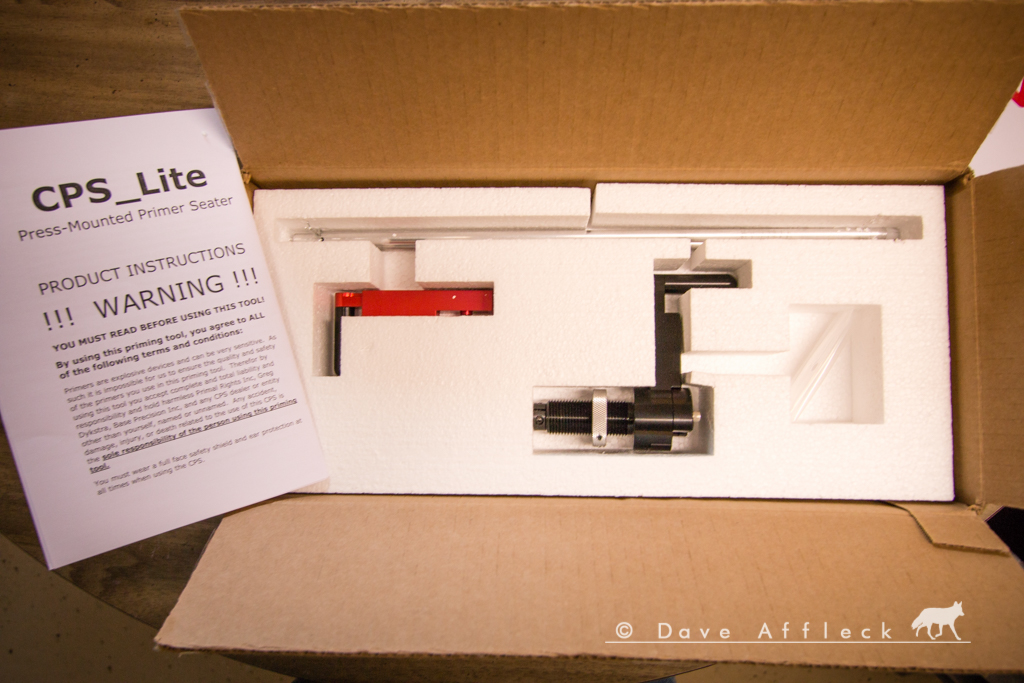
The CPS Lite comes with everything you need to prime both large and small rifle primers, with the exception of shell holders and a primer tray – both items I already had in stock. You’ll also need two allen wrenches for the lock ring and stop adjustment.
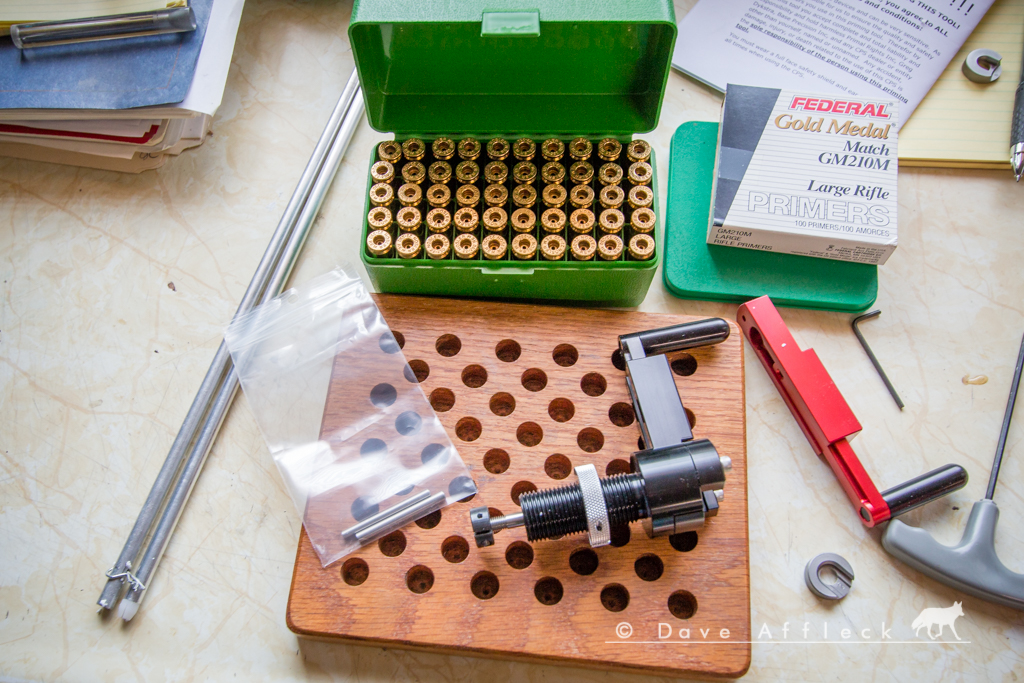
Initial inspection showed the kind of precise machining, excellent fit and finish that you’d expect from kit of this level. Construction is primarily of nicely anodized aluminum, with steel bits where needed. Everything looked absolutely perfect. No untoward poorly finished surfaces or ill mated fitting. The tool exudes quality in the hand. Something you can take pride in owning, a not entirely insignificant consideration when spending $200 for a priming tool.
Next, I turned my attention to the printed instructions. While I found the instructions text quite complete, I have to admit I also found them slightly confusing. In that, the instructions reference specific parts of the tool by name, but there was no diagram or illustration with part call outs to reference. Having never beheld a CPS before, I found it a bit hard to follow what was supposed to be what. However, the tool is simple and straightforward in use and adjustment. I’m sure I could have got it running properly with minimum fuss had there been no instructions at all. And, there is an instructional video on the Primal Rights website, which will have anyone up and running smoothly right out of the gate.
Using The CPS Lite
So, time to prime some cases! To use the CPS Lite, you begin by using your flipper tray to orient primers so that they can be picked up with one of the included primer tubes.
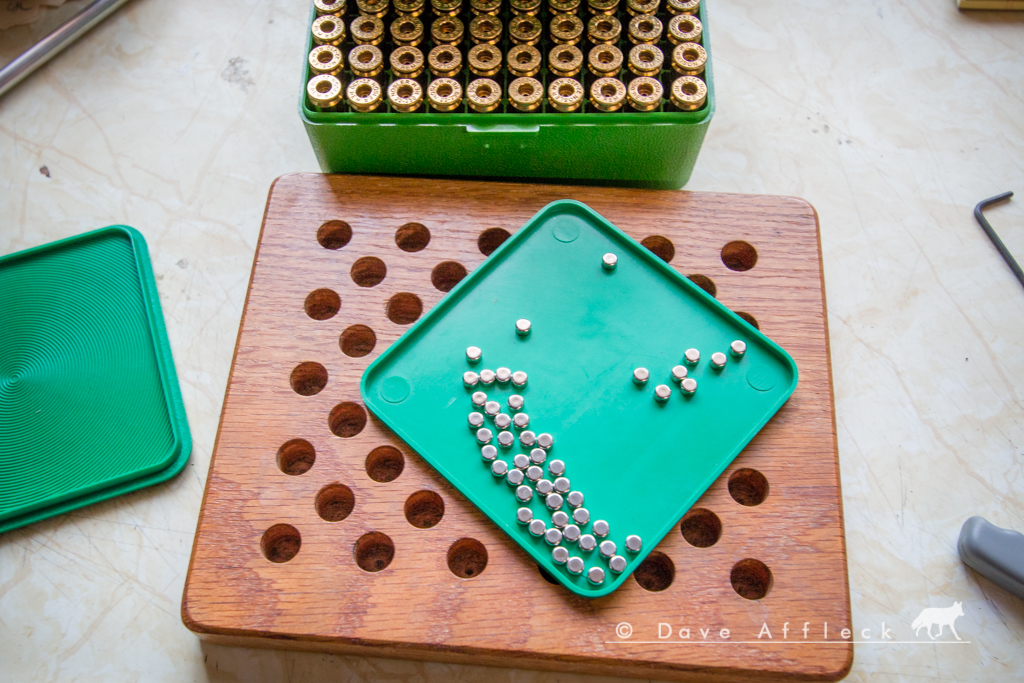
For this initial run down, I started with some freshly prepared Nosler cases for my .20-250 and Federal GM210M primers. The primer pockets were left in “as issued” condition with no uniforming performed.
These GM210M primers have only .003 of anvil leg protruding from the primer cup. As such, my practice with them has always been to simply seat the cup to be bottomed out in the pocket. The cup bottoming is extremely obvious when seating them by feel with the Sinclair tool. There’s nothing nuanced or subjective about it, the GM210M’s bottom out in primer pockets with a solid stop that is unmistakable.
So I began by priming a single case with the CPS Lite by feel. With intentions of using that one case to setup the stop adjustment before proceeding with the rest of the cases.
But, with the tool setup in the press so that the primer is fully seated before the press handle is lowered completely and achieving full mechanical leverage, I found that unmistakable GM210M “bottoming” was just as clearly obvious using the CPS Lite as it is with a hand priming tool.
So, I skipped the stop adjustment and proceeded to finish priming the whole batch by feel.
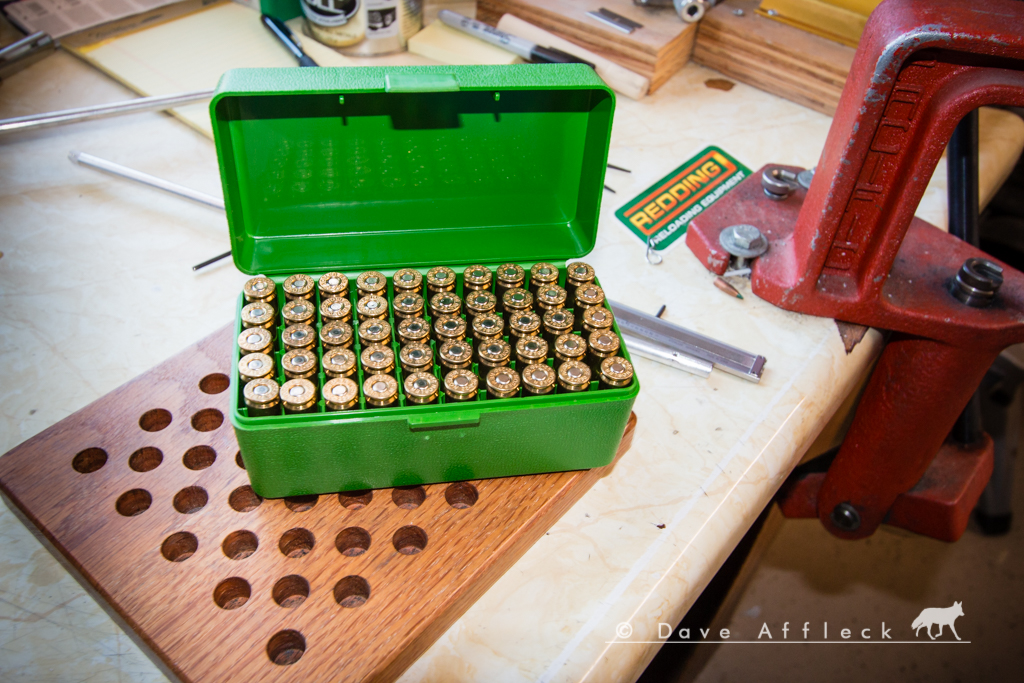
The entire operation from screwing the CPS Lite into the press to having 50 cases primed took less time than it has probably taken you to read this far!
However, since the ability to set a precise depth adjustment not dependent on feel is the primary feature of the CPS Lite, this wasn’t a fair or thorough evaluation. So, I went on with seating some Rem. 7-1/2 small rifle primers would be a good way to both further evaluate the “feel” of the CPS Lite and also to utilize and evaluate the seating depth stop adjustment.
A Tale Of Two Primers…
I’ve already mentioned that the GM210M has a scant .003 of anvil leg protrusion and that I have always seated them to simply bottom the cup in the pocket. Couldn’t be more straightforward or simple. The Rem 7-1/2 is a completely different animal. The lot I’m using here has anvil legs protruding .014 from the cup. Picture below is the 7-1/2 on the left and GM210M on the right and you can see the difference.
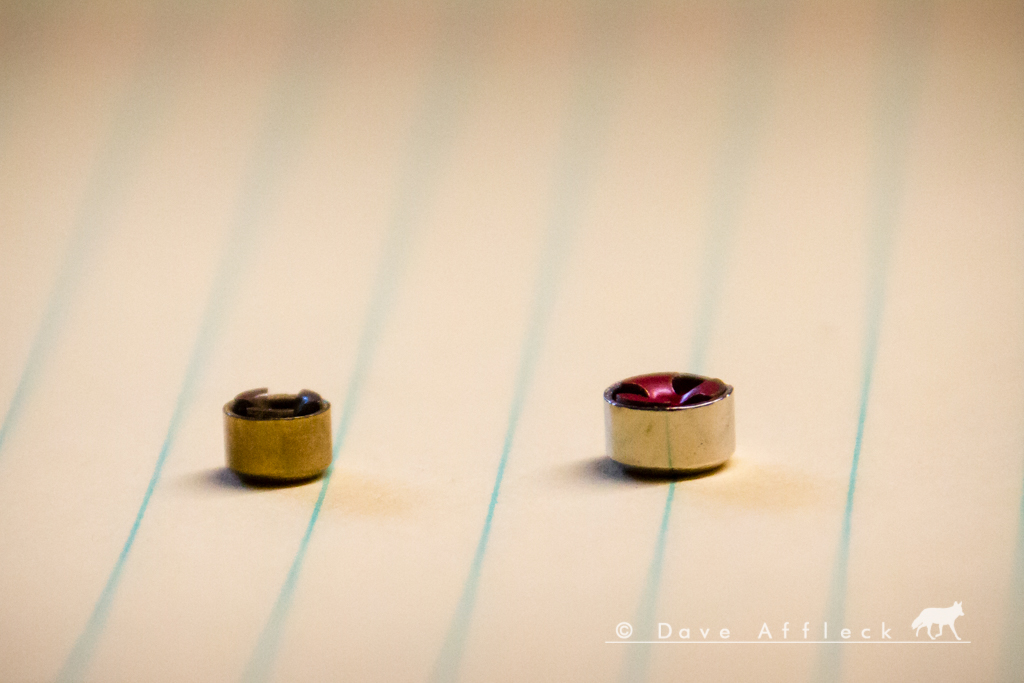
Changing over the CPS Lite from large rifle to small rifle was fast and easy. I left the tool in the press, removed the two cap screws for the shell holder retainer, swapped in the small rifle primer shuttle and correct shell holder, replaced the retainer and was good to go again in seconds. Definitely easier and faster to swap out than my favorite Sinclair tool. In fact, I eventually bought a second Sinclair tool so I could just leave one setup for large rifle and one for small, to avoid having to make the switch. The CPS Lite is so easy to change out, I’d never consider buying a second one for that reason.
To use with the 7-1/2’s I selected a box of .17 Mach IV cases with several firings on them, but which the primer pockets had been uniformed when new.
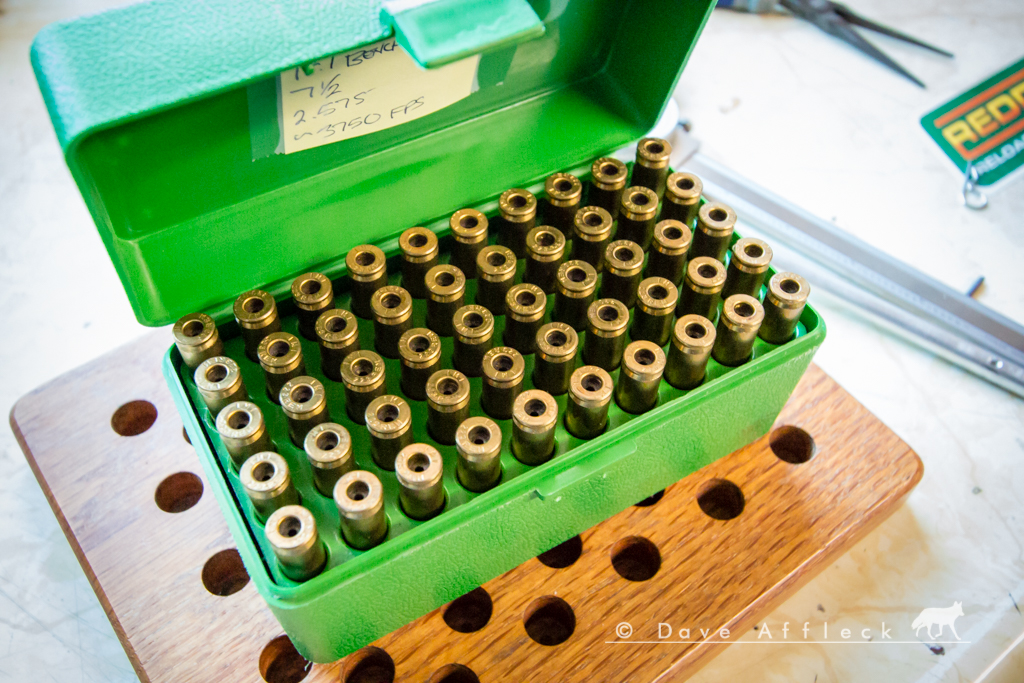
My practice with 7-1/2’s when seating by feel is to seat them until I feel the anvil legs contact the bottom of the primer pocket, then keep going until I feel a bit of crush on the primer pellet. So I seated one 7-1/2 by feel with my old Sinclair tool to give me a starting point for setting up the CPS Lite. Measurement showed that I was seating them to provide .007 crush on the pellet with the cup sitting .005 below flush with the case head.
My first attempts at setting the depth stop adjustment were using the method shown in the instructional video. Whereby an already primed case is used to locate the priming rod and the mechanical stop is brought up against the body of the tool and locked in place. As shown in the picture below.
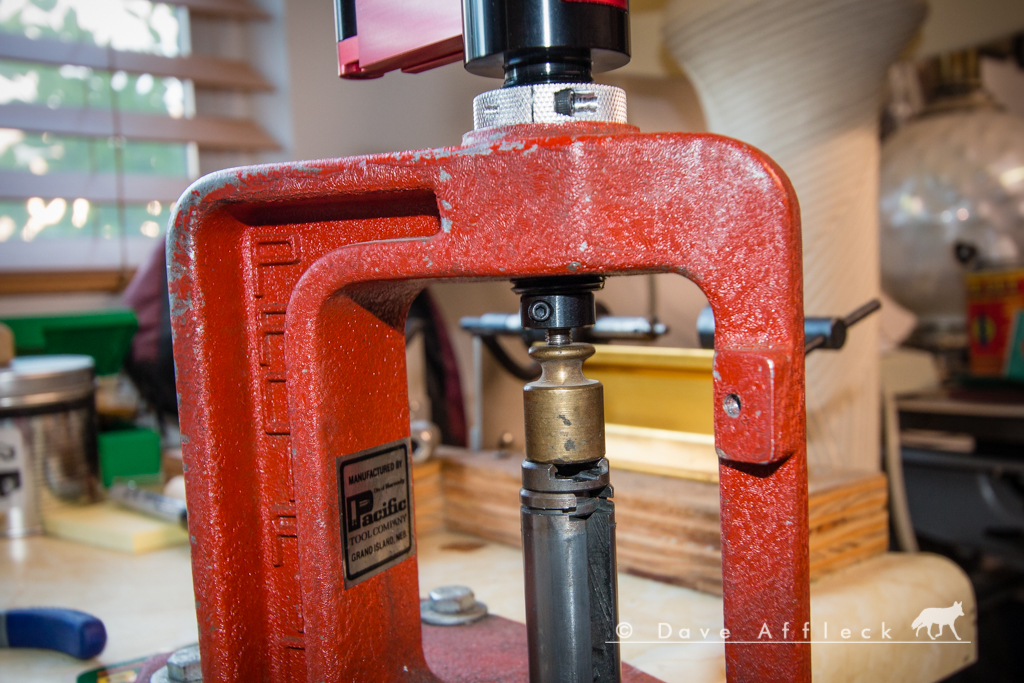
I don’t know what my problem was, but after fussing with the above process several times, I kept coming up with primers seated shallower than the .005 depth of the case being used for setup. So knowing which direction my adjustment needed to go, I simply loosened the lock ring and turned the priming rod slightly into the tool for deeper seating and locked the ring. I got the exact amount of turn-in needed on the first try and the tool was not setup to seat using the hard stop for precisely, consistent seating depth on the rest of the batch.
And, using the hard stop in this manner is the only way to go for seating 7-1/2’s with the CPS Lite. Unlike the GM210M’s that have a really hard bottoming on the cup that was easy to feel with the press mounted tool, the 7-1/2’s, were being seated not until the cup bottoms, but only until what I think is a proper amount of pellet crush is reached. There simply was not enough feel in the press mounted unit to have any hope of consistency in seating at the precise depth desired doing it by feel. This is why I have always disdained seating primers with the press or most bench mounted priming tools – they simply lack the delicate feel needed for this kind of specific application.
The precise hard stop adjustment of the CPS Lite provides for the consistent and precise seating depth, without the need for feel. And once the adjustment was set, the 50 cases were primed in about 3 minutes flat.
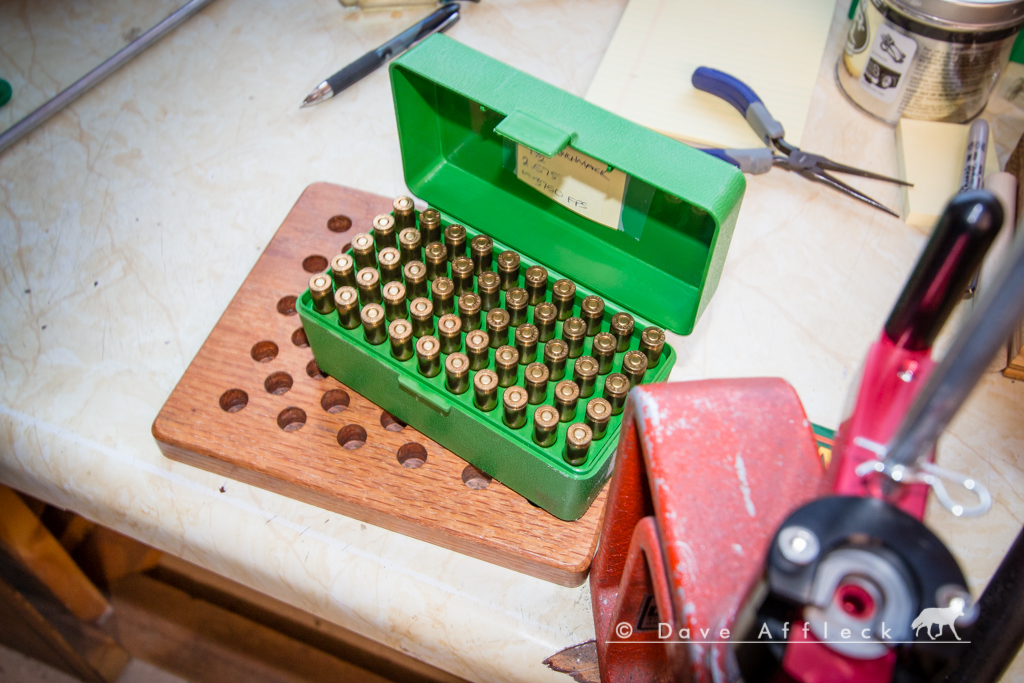
When I was finished, I found that the CPS Lite fits nicely into an RCBS die box.
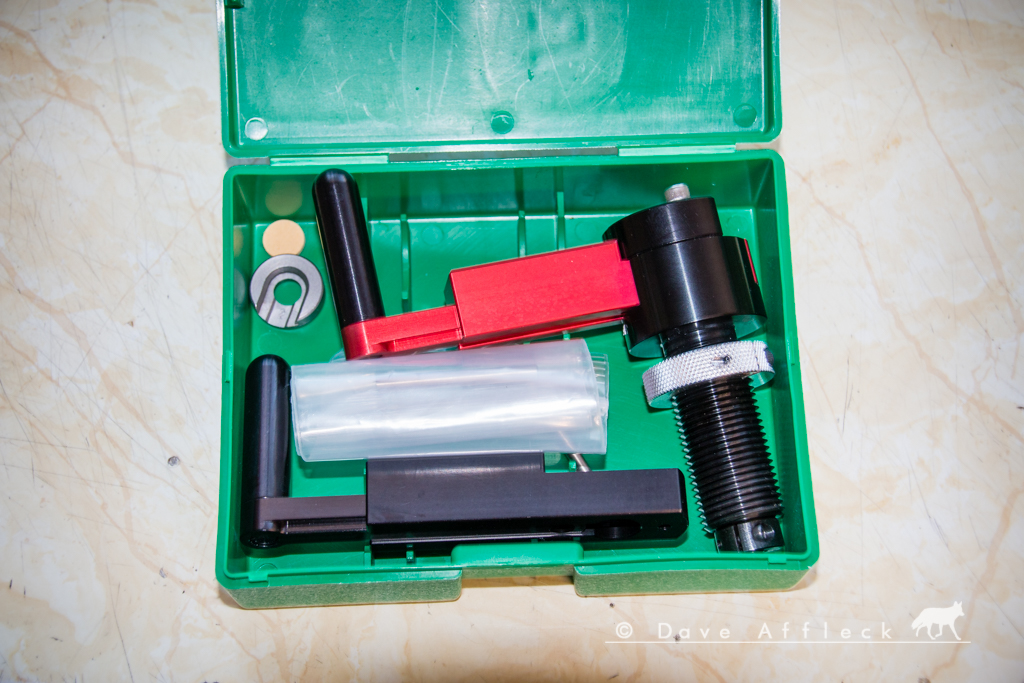
My thoughts… The CPS Lite is easy to setup, fast and easy to change between LR and SR. Once setup and adjusted, it provides very fast, consistent and precise primer seating. In other words, it does exactly what Primal Rights says it does.
- DAA







Dave, does it really have that much of a benefit over a hand primer to be worth it?
Just depends on how much and what type of ammo you are loading. For me, most of the time, most of the loading I do, a hand primer is still my go to.